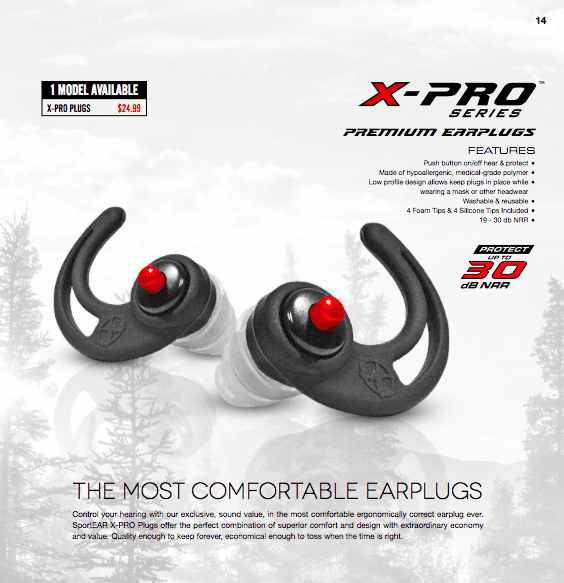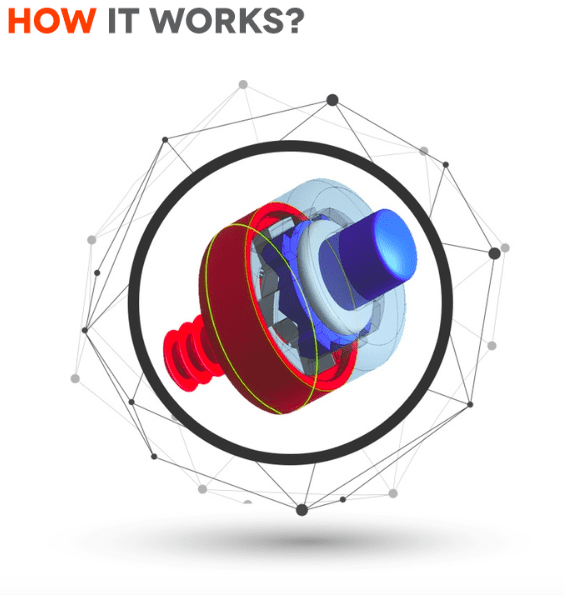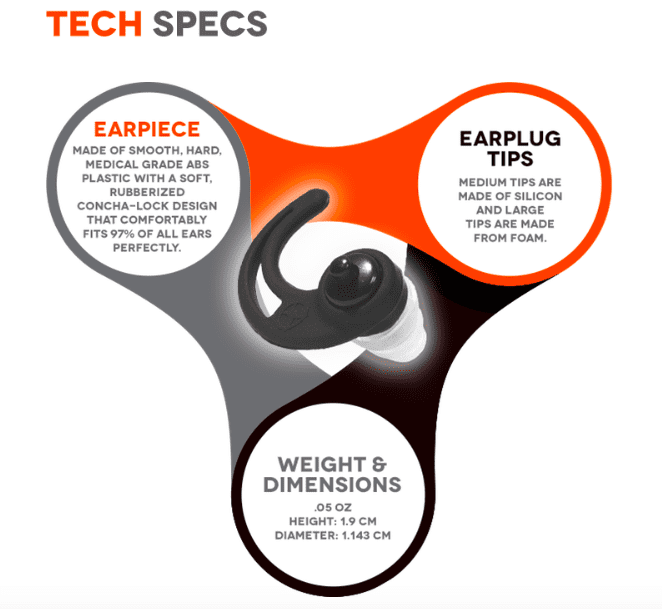Too many shooters give too little thought to their hearing. That’s a good way to wind up with the TV turned up to 11 while you’re blissfully unaware of your wife shouting your name. Depending on who you married (and how long ago), that may be more of a feature that a bug. But if you like hearing the people who are talking to you without needing to read their lips, you need to give your ears some care while at the range and in the field. This being the 21st century, you have options from simple foam stopples to active electronic over-the-ear muffs all the way to custom in-ear electronic solutions that can run you as much as a used KIA. For those of us who are more budget-minded and want to preserve their auditory abilities, the hearing pros at ProSounds are out with a new, affordable, semi-custom plug that lets you turn your protection on or off with the press of a button . . .
ProSounds (they’re the brains behind the popular SportEAR brand, too) has a IndieGoGo page up and running for the X-Pros and if you click over, you’ll see they’re oversubscribed by almost a factor of four. So someone likes the idea. We have a pair on the way and will pass on a full report. Here’s their pitch:
At ProSounds, we are dedicated to providing the very best hearing protection. We deliver all of the benefits of hearing protection, but none of the problems.The X-Pro ear plugs are simplicity itself. Designed to fit comfortably in any ear, you’ll hardly even notice you’re wearing anything.
After the X-Pro is comfortably settled in your ear, you can activate the hearing protection with the push of a button. The closed valve will now protect your hearing by giving you 30dB of noise reduction with the foam tips (24 dB noise reduction with silicon tips).
When you need to hear again, instead of completely removing the ear plugs, simply press the button again to open the acoustic valve (patent pending), allowing sound to pass through naturally. X-Pro Ear Plugs are washable and reusable to help you avoid the hassle and extra expense of constantly having to replace disposable earplugs.







Look a lot like my surefire plugs. Love the design. Mine use a flip plug of sorts, but this button thing looks promising.
But the surefires don’t rattle, and I heard these ones do in a review on another site.
I’m pretty sure I’d forget that I had deactivated the protection, and then shoot something with it off. Repeatedly.
I always double up when I shoot with plugs and muffs.
I’m assuming that it is going to work closely to how a click-top ball point pen works. So in one position there will probably be an unloaded member which can rattle around a little, but in the other it should be locked up. I can only hope that it only rattles in the “auditory valve open” position, because having things rattling in my ear with everything else muted would be very annoying.
Count me in as interested. I have yet to find suitable replacement for my old pair Silencio silicone ear plugs that got stolen along with my range bag in a vehicle break in. I still cannot understand why they discontinued those, they were comfortable, super quiet, washable, and really easy to quickly insert or remove, and we’re cheap. If that can’t be marketed successfully I’m not sure what can.
A link to the kickstarter page would be nice.
Try googling “X-Pro Kickstarter.” You should have your link in about a half a second.
My bad. Link added.
Interesting. I wonder what the NRR is.
“After the X-Pro is comfortably settled in your ear, you can activate the hearing protection with the push of a button. The closed valve will now protect your hearing by giving you 30dB of noise reduction with the foam tips (24 dB noise reduction with silicon tips)”
Well, two things. First, NRR isn’t attenuation in dB. To get the actual sound at your ears, you use (start)-(NRR-7)/2. So an NRR of 33 will knock down a 100dB sound down to 87 dB, not 67. I know its quoted in dB and that’s rather misleading, but we seem to be stuck with it.
Second, and I should have been more precise here, the NRR is usually given as an average across the auditory spectrum, but in reality the attenuation varies with frequency. I’d love to know what that curve is. I have some hearing damage at the higher frequencies, so when I can, I look for hearpro with strong attenuation high up.
This is informationI did not know.
Having raced cars for a number of years and now doing a lot of shooting, I’ve clearly got the onset of tinnitus. It used to clear pretty quickly after shooting sessions but now it lingers for days at a very low level.
What’s the best reduction folks have found?
How good are some of the more custom in-ear options?
Does anyone have any pointers to the acoustic frequency spread of a typical gun shot?
Thank you! In my ignorance I had been simply subtracting the NRR from the loudness of the noise in decibels. This formula is not widely known among shooters, and I had not encountered it. Now that I know I may be getting close to a third of the NRR in actual decibel reduction, I am going to be much more aggressive about demanding high NRR and doubling up with muffs and plugs together (which gives an additional -5 dB). For those who would like more information and to get it from reliable sources as I did, see these three links: OSHA, 3M, NoiseMeters Inc. Hearing Protection Calculator.
You can really only improve ear protection so much. There’s the sustained noise, like that of power tools, to defend against, but there’s also spike noise, like firearms. Different technologies apply to each, so you need to be aware of the product’s capabilities and limitations.
Beyond that, there’s a helluva lot more to the ear than the pinna (outer ear) and the ear canal. There are other routes for sound to travel through, like your skull, to these inner ear parts, too. That’s why aircraft carrier crews wear those whole head helmets: to block sound from more directions.
Ear protection that ignores these other avenues may not be offering as much practical protection as they are theoretically able to provide.
The amount of sound that can be coupled into your inner ear through your forehead is impressive, I’ve found.
Even when wearing molded ear plugs and muffs on top of that, when I fire rifles with brakes on them, in about 5 to 10 rounds, my ears are ringing like church bells.
I have noticed this phenomenon of sound getting in through other routes. F’rinstance, when I yawn, or make some other “Ow, I gotta pop my ears!” kind of movement with my jaw, I often hear the disturbing BANG! of the guy in the next firing line through my eustachian tubes. I haaaaate it when that happens.
That’s why your voice sounds different (to you) when you hear a recording of yourself. You are used to hearing your voice through bone conduction, nobody else hears it that way.
I have screw in water ear plugs which work better than most if not all, firearm ear plugs. I also use head sets now and then, but find the water plugs do a better job of reducing the db’s.
Link please?
I recently bought a set of over the ears, electronic hearing protectors. I’ve always had problems with in the ear plugs, so I just resorted to the regular over the ear protectors. The problem of course, is that you have to the move the things to be able to hear anybody talking.
The electronic decibel reducing protectors are the way to go. They actually amplify the surrounding noise, and voices, but cut off the sharp crack of a hi powered rifle.
These plugs are an advantage over regular plugs, but you have to press the button every time you switch modes. The electronic protectors do it automatically.
I find using a set of Howard Leight 30 NRR electronic hearpro over a set of in-the-ear foam plugs works okay for the indoor range. The HLs can boost the ambient volume so you can still have a conversation.
I’ve been a musician for decades and a gun-enthusiast for years. Nothing tops the thick, foam earplugs. For $25 I can have enough foam ear plugs to last a lifetime.
I’ve found over-the-ear options can interfere with a good cheek weld.
A musician using foam earplugs? For about $10 you can get a pair of musician’s earplugs and not have muffled sound. I carry them with me everyday and use them whenever I’m listening to loud music and don’t have control of the volume. Lower NRR than cheap foam plugs, but you can hear sound clearly. The marketing pitches it as “like turning the volume down on your ears”. Check out Etymotic.
I’ll look into it but I’m kind of set in my ways.
WHAT !!
TOOK ME A MINUTE, BUT I SEE WHAT YOU DID HERE. FUNNY.
WHAT !
WILL SOMEBODY PLEASE ANSWER THAT PHONE?!?!?!?!
I was at Front Sight earlier this year, and they were advertising an in the ear plugs that were supposed to be as good as over the ear muffs, the electronic ones. However, they started at $799, and went up to $2499. I didn’t get a chance to try them, and am still sticking to my electronic ear muffs (about $220 several years ago).
Bill
“$220 several years ago” That sounds like you got a really great set! I paid $60 bucks, on sale for mine. They seem to work just fine. There is a volume control wheel on one side.
Amazon has some electronic ear plugs that are $299. Still a bit steep for me, but if you paid $220 for some e-muffs, they might be up your ally.
I can’t wait until the e-plugs are cheap enough to be within reach!
Surefire XP7 for me, foam tips = $20
Surefire XP3 with the silicon flaps = my son loves them as much as I like my XP7’s
it just doesnt seem like these would work well. you get alot of sound penetrating through the back of your ear through the skull which earmuffs help reduce by covering those areas. i would really like to see a thorough review of these. CAN’T WAIT!
19-30 NRR? What the heck does that mean? Is it 19 “switched off”, 30 when “switched on”? A 19dB NRR earplug does not provide transparent, normal sound, although hearing is easier than with a 30dB NRR earplug to be sure.
I found the 3M Peltor TEP-100 on Amazon as a daily deal and snagged them for under $200. Add their Skull Screw foam tips, and you have 30 NRR. They come in a very small and VERY sturdy feeling case.
I’m assuming they’re not as good as the custom varieties out there, nor are they perfect, but for the price at under $300, I can definitely recommend these electronic ear plugs.
Comments are closed.